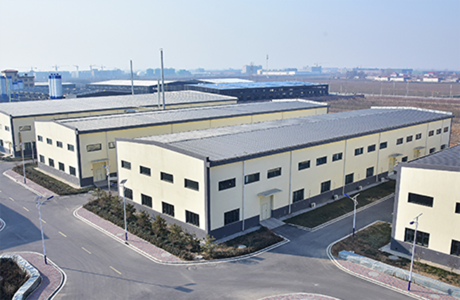- Afrikaans
- Albanian
- Amharic
- Arabic
- Armenian
- Azerbaijani
- Basque
- Belarusian
- Bengali
- Bosnian
- Bulgarian
- Catalan
- Cebuano
- Corsican
- Croatian
- Czech
- Danish
- Dutch
- English
- Esperanto
- Estonian
- Finnish
- French
- Frisian
- Galician
- Georgian
- German
- Greek
- Gujarati
- Haitian Creole
- hausa
- hawaiian
- Hebrew
- Hindi
- Miao
- Hungarian
- Icelandic
- igbo
- Indonesian
- irish
- Italian
- Japanese
- Javanese
- Kannada
- kazakh
- Khmer
- Rwandese
- Korean
- Kurdish
- Kyrgyz
- Lao
- Latin
- Latvian
- Lithuanian
- Luxembourgish
- Macedonian
- Malgashi
- Malay
- Malayalam
- Maltese
- Maori
- Marathi
- Mongolian
- Myanmar
- Nepali
- Norwegian
- Norwegian
- Occitan
- Pashto
- Persian
- Polish
- Portuguese
- Punjabi
- Romanian
- Russian
- Samoan
- Scottish Gaelic
- Serbian
- Sesotho
- Shona
- Sindhi
- Sinhala
- Slovak
- Slovenian
- Somali
- Spanish
- Sundanese
- Swahili
- Swedish
- Tagalog
- Tajik
- Tamil
- Tatar
- Telugu
- Thai
- Turkish
- Turkmen
- Ukrainian
- Urdu
- Uighur
- Uzbek
- Vietnamese
- Welsh
- Bantu
- Yiddish
- Yoruba
- Zulu
8 月 . 04, 2024 01:22 Back to list
Understanding the Various Mechanisms Behind Antibiotic Resistance in Bacteria and Their Implications for Healthcare
Mechanisms of Antibiotic Resistance
Antibiotic resistance is a pressing global health concern that threatens the efficacy of treatments for bacterial infections. As bacteria evolve, their mechanisms of resistance have become increasingly sophisticated, posing significant challenges to medical professionals. Understanding these mechanisms is vital for developing strategies to combat resistant strains and preserve the effectiveness of existing antibiotics.
One primary mechanism of antibiotic resistance is the alteration of the target site. Many antibiotics function by binding to specific bacterial proteins or structures, disrupting essential processes such as protein synthesis or cell wall formation. Bacteria can mutate or acquire genes that encode modifications to these target sites, reducing the binding affinity of the antibiotic. For example, some strains of Streptococcus pneumoniae have developed mutations in the penicillin-binding proteins, rendering penicillin ineffective.
Mechanisms of Antibiotic Resistance
Efflux pumps also play a critical role in antibiotic resistance. These are membrane proteins that actively transport antibiotics out of bacterial cells, reducing intracellular concentrations to sublethal levels. This mechanism is particularly prevalent in Gram-negative bacteria, which can expel a wide range of antibiotics. For instance, the AcrAB-TolC efflux pump in Escherichia coli is known to confer multidrug resistance by ejecting various classes of antibiotics, including tetracyclines and quinolones.
mechanisms of antibiotic resistance pdf

Furthermore, some bacteria can modify the antibiotic itself. For example, aminoglycoside-modifying enzymes can add chemical groups to aminoglycoside antibiotics, preventing them from binding to their target ribosomal RNA. This enzymatic modification can occur through acetylation, phosphorylation, or adenylation, significantly diminishing the antibiotic's effectiveness and leading to treatment failures.
The emergence of biofilms is another factor contributing to antibiotic resistance. Biofilms are structured communities of bacteria that adhere to surfaces and are enclosed in a protective extracellular matrix. Within biofilms, bacteria exhibit altered metabolic states and decreased susceptibility to antibiotics. This is particularly concerning in clinical settings, where biofilms can form on medical devices such as catheters and implants, making infections difficult to treat and often leading to chronic conditions.
Lastly, the misuse and overuse of antibiotics in human medicine and agriculture have accelerated the emergence of resistant strains. Inappropriate prescriptions, incomplete courses of treatment, and the use of antibiotics for growth promotion in livestock create selective pressure that favors resistant bacteria. Consequently, resistant infections are becoming more common, leading to increased morbidity, mortality, and healthcare costs.
In conclusion, the mechanisms of antibiotic resistance are diverse and complex, involving genetic mutations, enzymatic deactivation, efflux pumps, biofilm formation, and more. As bacteria continue to evolve, it is crucial to develop new antibiotics, improve stewardship practices, and implement infection control measures. A multi-faceted approach is essential for mitigating the impact of antibiotic resistance and ensuring effective treatments for bacterial infections in the future. The ongoing research into these mechanisms will be pivotal in informing public health strategies and advancing our understanding of microbial resistance.
-
The Power of Radix Isatidis Extract for Your Health and Wellness
NewsOct.29,2024
-
Neomycin Sulfate Soluble Powder: A Versatile Solution for Pet Health
NewsOct.29,2024
-
Lincomycin Hydrochloride Soluble Powder – The Essential Solution
NewsOct.29,2024
-
Garamycin Gentamicin Sulfate for Effective Infection Control
NewsOct.29,2024
-
Doxycycline Hyclate Soluble Powder: Your Antibiotic Needs
NewsOct.29,2024
-
Tilmicosin Premix: The Ultimate Solution for Poultry Health
NewsOct.29,2024













